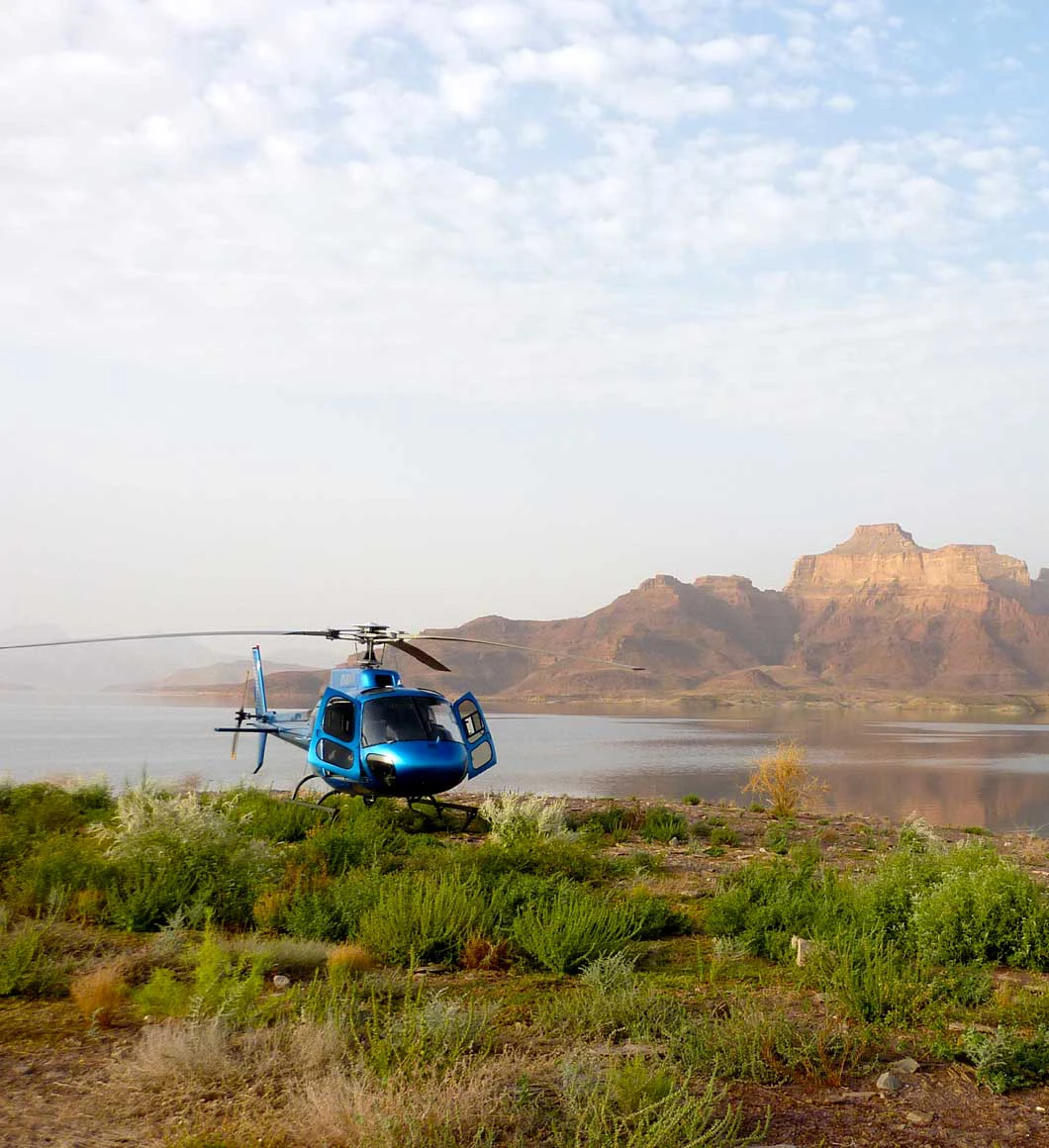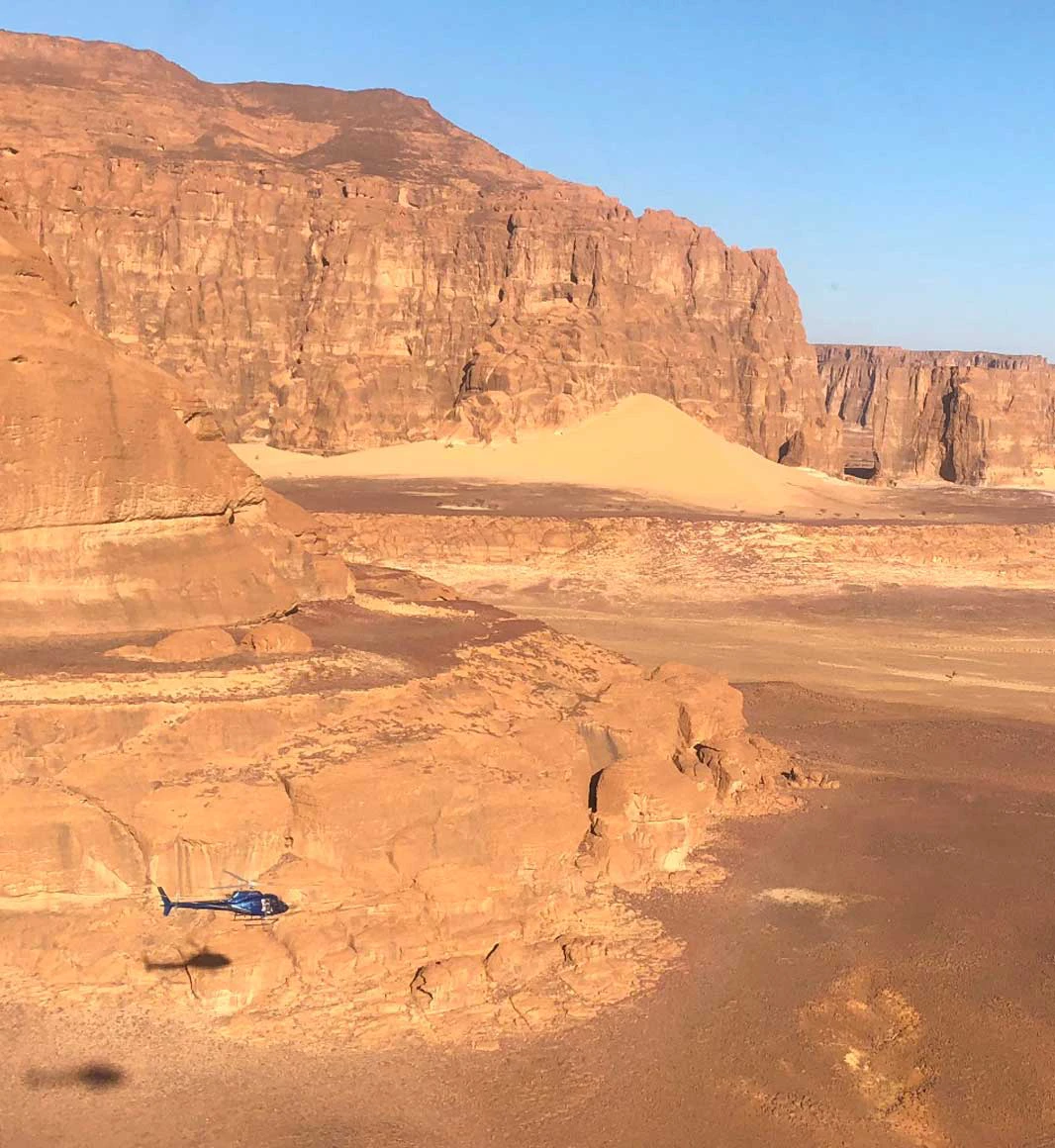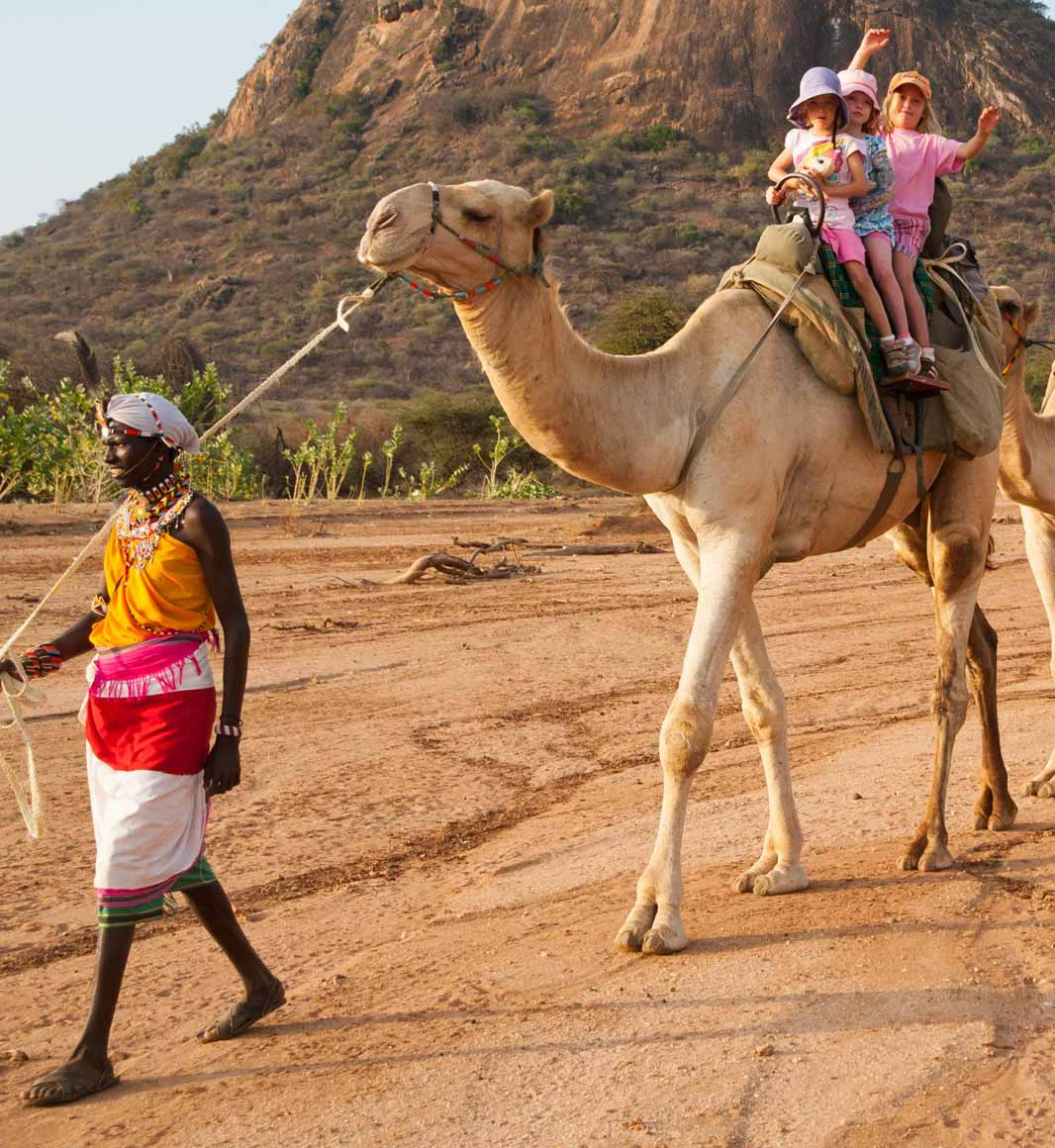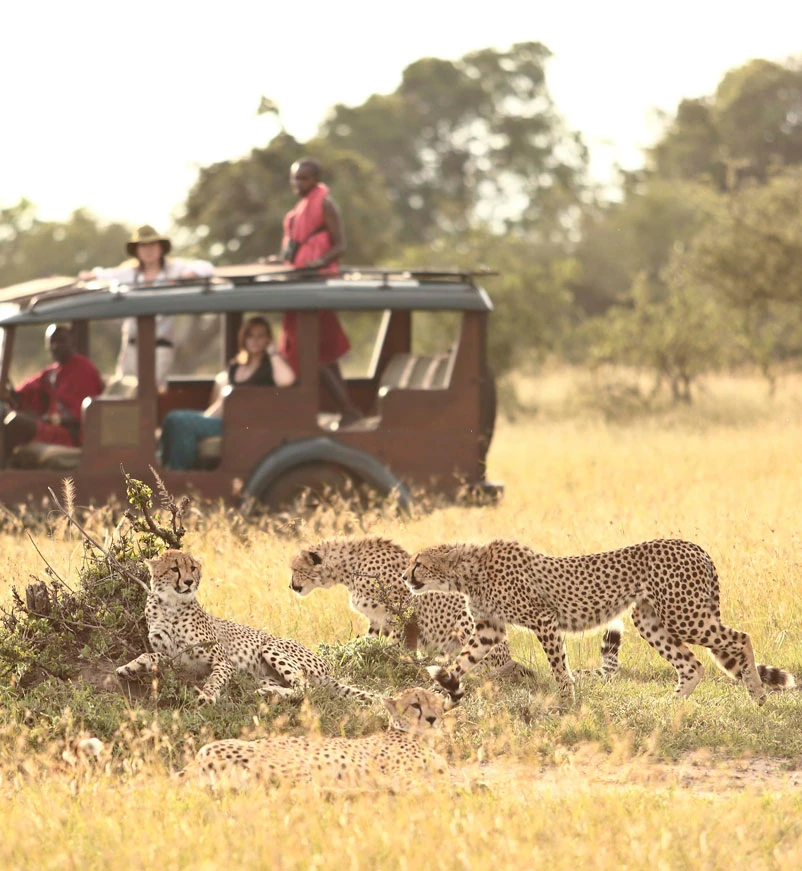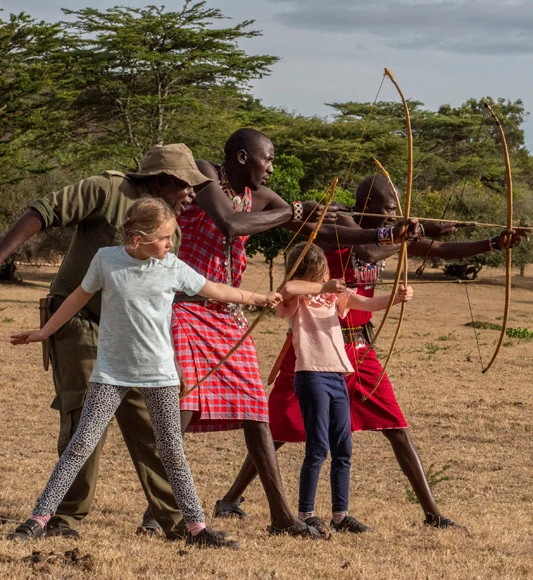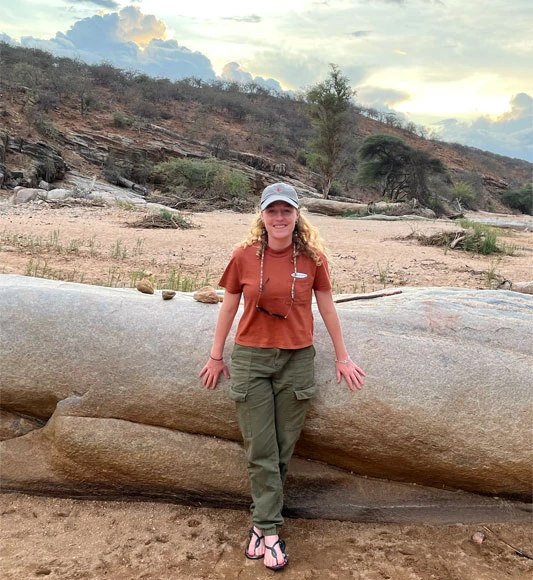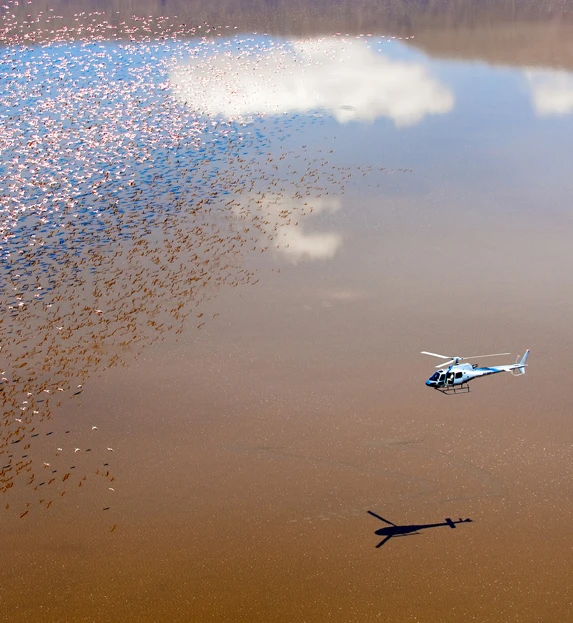
Viewing flocks of flamingos from above is a mesmerising sight.(©Tropic Air)
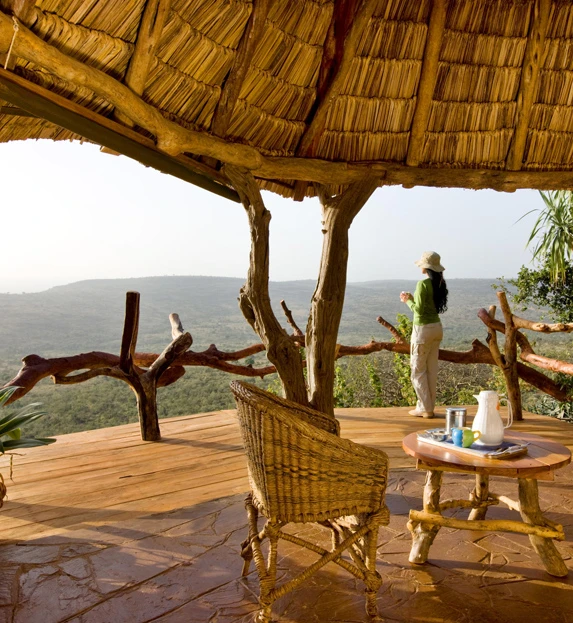
Ol Malo is a welcoming retreat on the cliffs of Laikipia Plateau. (©Ol Malo)
From alkaline lakes teeming with flamingos to active volcanoes, deserts and mega calderas surrounded by jade-green waters, the landscape is simply breathtaking.
Described as the ‘last frontier’ of untouched wilderness in Kenya, the most practical way to experience the majesty of Cathedral Rock, the flamingo flocks of Lake Logipi and the beautiful sand dunes and unique mushroom rocks of the Sugata Desert is by flying.
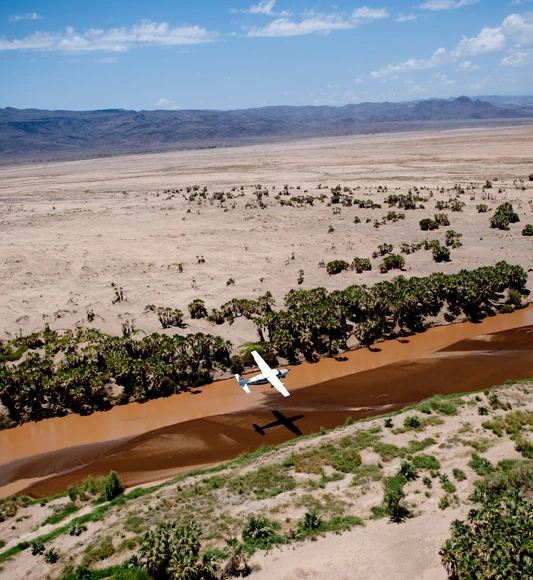
Flying low over Suguta River. (©Scenic Air)
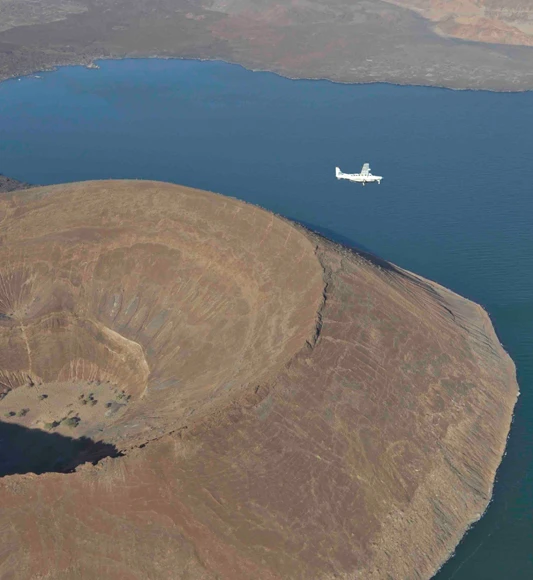
Flying over Lake Turkana and the Nabiyotum Crater. (©Scenic Air)
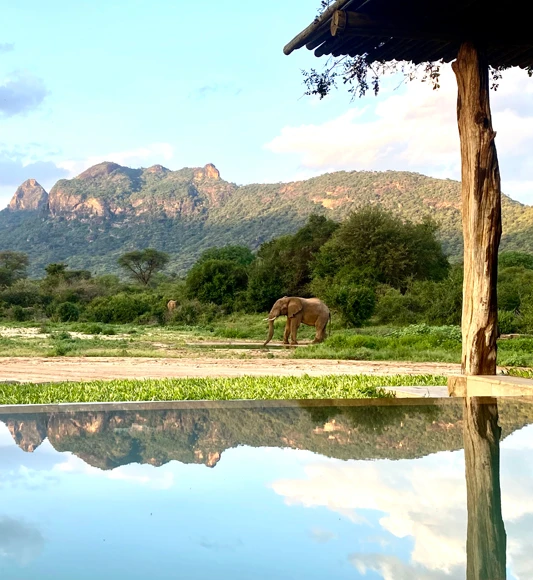
Unwinding at Kalepo Camp with views of elephant (©Kalepo Camp)
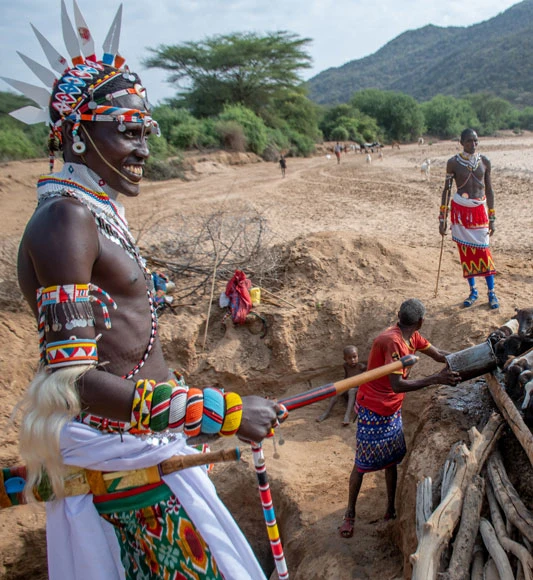
Samburu tribe digging a well to provide drinking water for their livestock. (©Kalepo Camp)
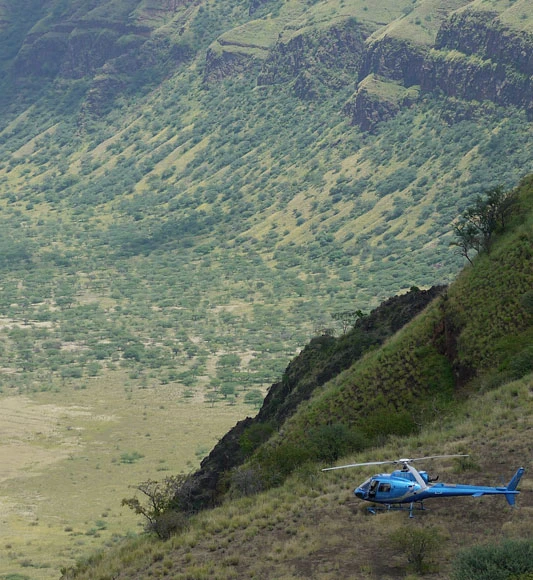
Silali Crater – the largest caldera volcano in the Gregory Rift Valley, near Kapedo. (©Tropic Air)
"Swooping over ancient calderas and through the Painted Valley with its layers of red and orange rock features, the landscape is arid and desolate, punctuated by occasional rocky hills."
Exploring Laikipia from Ol Malo
My nine-day scenic flying safari begins with a private flight from Nairobi to Laikipia, a beautiful region north of the equator. The landscape here is semi-arid, attracting all kinds of species that you won’t find elsewhere, including the rare Grévy’s zebra, Beisa oryx, reticulated giraffe and Somali ostrich.
My base here is Ol Malo, a family-owned lodge perched on the cliffs of Laikipia Plateau with the most incredible views. Hewn from local rock, the lodge is warm and welcoming with roaring fires, farm-to-table cuisine and a variety of activities including safari drives, guided bushwalks, horseriding, bird watching and even camel safaris! There’s also an option to spend the night in the Treehouse or Leopard Hide – a unique experience not to be missed.
Flying over the Suguta Valley and the Jade Sea
After two wonderful nights at Ol Malo, it’s time to continue on my journey. A scenic flight takes me north from Ol Malo to the Sugata Valley, one of the driest parts of Kenya. Often referred to as “the valley of death” due to the stark and barren landscape that stretches from horizon to horizon, Sugata is mesmerising from the air. Swooping over ancient calderas and through the Painted Valley with its layers of red and orange rock features, the landscape is arid and desolate, punctuated by occasional rocky hills.
From Sugata Valley to the shores of Lake Turkana; also known as ‘The Jade Sea’ due to its brilliant jade green colour, Lake Turkana is the largest permanent desert lake in the world and the most saline of Africa’s large lakes. My base for the next two nights is Lobolo Camp, a simple yet charming camp on the western shores of the lake with just a handful of tents. From my verandah overlooking the lake, I enjoy watching the local fishermen return with their catch of the day.
There are plenty of activities to discover here, from exploring the islands by boat to visiting one of the villages and learning about the local Turkana tribes who live in some of the harshest conditions. Helicopter day excursions are also popular – mine takes me over Elyie Springs and the Teleki Volcano, Lake Logipi with its flocks of flamingos and past Cathedral Rock before touching down in the sand dunes of Sugata Valley.
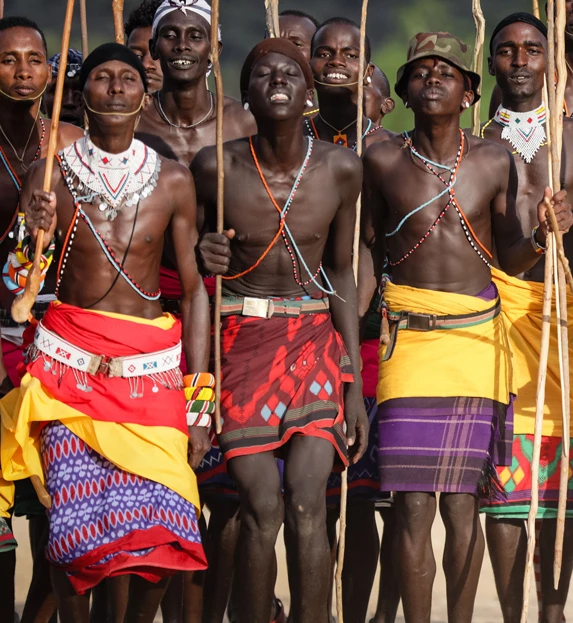
The semi-nomadic Samburu tribe.(©Kalepo Camp)
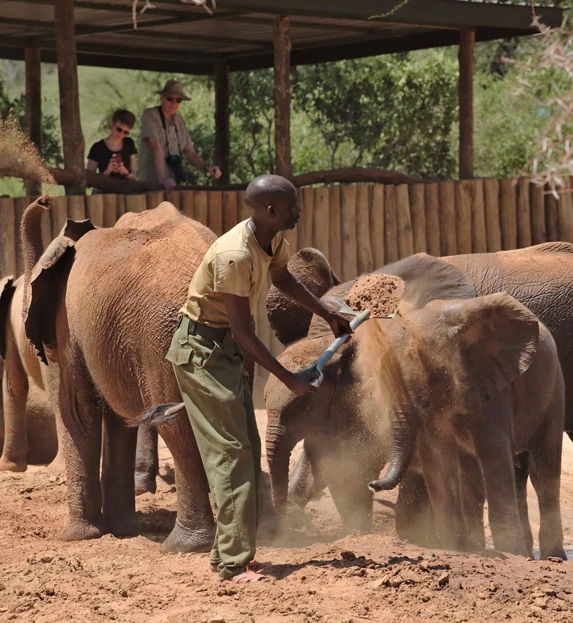
Reteti Elephant Sanctuary. (©Sarara)
From Elephant Spotting to Singing Wells
After a leisurely breakfast, I fly to the Northern Frontier District and the Matthews Mountains. My home is Kalepo Camp, an intimate private use luxury tented camp nestled in the heart of Samburuland. Set in a shady grove of acacias with the majestic Matthews Mountains as a backdrop, this is the perfect spot to relax and unwind on the final part of my trip. From wood-fired pizzas to authentic Swahili cuisine, the food is excellent whilst the comprehensive gin bar is an attraction all of its own!
As well as spotting elephant as they traverse the riverbed in search of new pods and berries, Kalepo is one of the best places to learn about the authentic culture of the semi-nomadic Samburu tribe. I spend a wonderful day visiting the local Samburu village, meeting the chief herdsman and his family of five wives and witnessing their way of life firsthand. I walk with them, their Boran cattle and their goats to the wells. With water a precious resource in this barren land, the warriors dedicate the day to digging deep wells for drinking water for their livestock. As they dig, they sing to the cattle. Known as the ‘singing wells’, it’s a fabulous spectacle to witness.
Another accommodation option is Sarara Camp, a family-owned lodge in the Namunyak Conservancy with wonderful views and abundant wildlife. There are regular sightings of elephant, reticulated giraffe, buffalo, kudu, impala, leopard and wild dog here.
Choose to stay in a spacious and beautifully appointed en-suite tent, an exclusive two-bedroom house with a magnificent plunge pool or a treehouse. Explore this incredible landscape on guided trail runs or walking safaris, game drives or horseback safaris. There’s also an opportunity to visit the nearby Retiti Elephant Sanctuary which takes in orphaned and abandoned elephant calves with the aim to release them back into the wild herds adjoining Reteti.
Sarara works in close partnership with the Samburu people through the Sarara Foundation. The construction of the community-owned Sarara Treehouses, Reteti House and Samburu Montessori, came about as an effort to build sustainability for community-owned conservation areas. Their story has become a flagship model for conservation on community land across Africa.
Looking to follow in Nicola's footsteps?
Related articles
